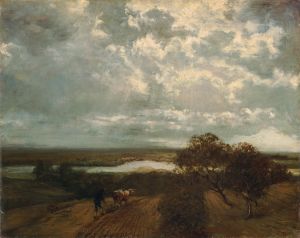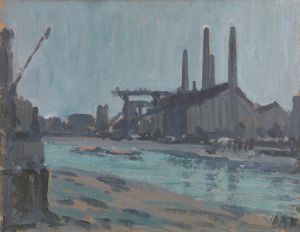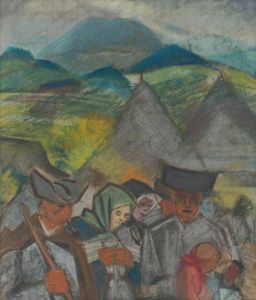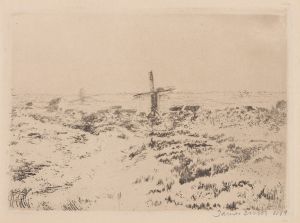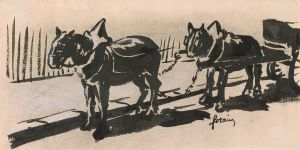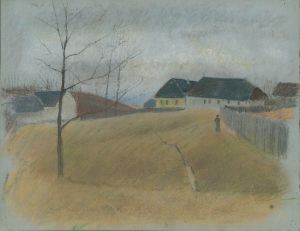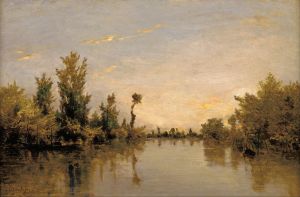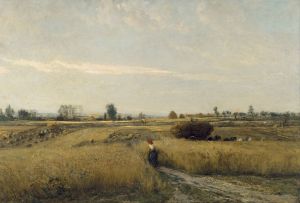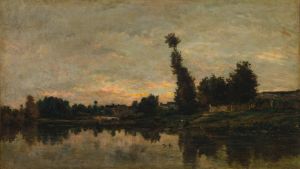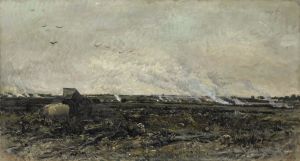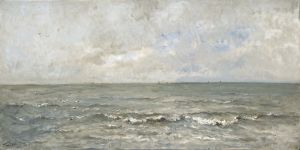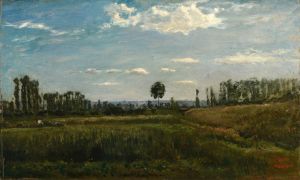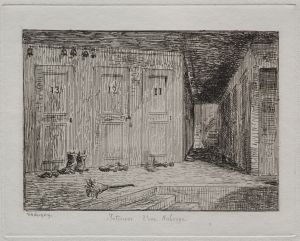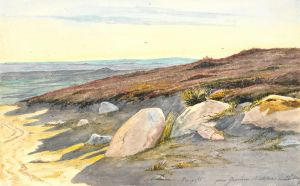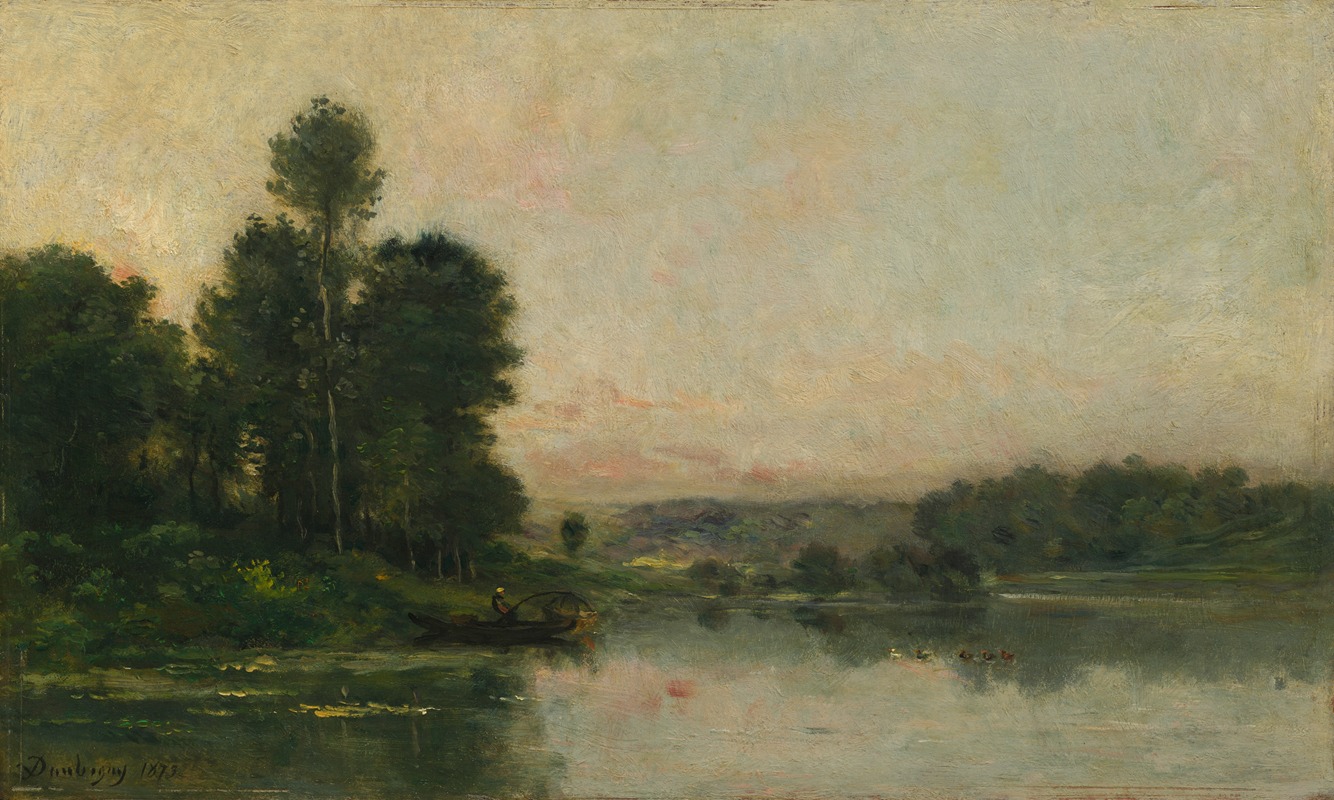
The Hillsides of Méry-sur-Oise, Opposite Auvers
A hand-painted replica of Charles François Daubigny’s masterpiece The Hillsides of Méry-sur-Oise, Opposite Auvers, meticulously crafted by professional artists to capture the true essence of the original. Each piece is created with museum-quality canvas and rare mineral pigments, carefully painted by experienced artists with delicate brushstrokes and rich, layered colors to perfectly recreate the texture of the original artwork. Unlike machine-printed reproductions, this hand-painted version brings the painting to life, infused with the artist’s emotions and skill in every stroke. Whether for personal collection or home decoration, it instantly elevates the artistic atmosphere of any space.
"The Hillsides of Méry-sur-Oise, Opposite Auvers" is a notable painting by the French artist Charles François Daubigny, a prominent figure in the Barbizon School and a precursor to the Impressionist movement. Daubigny was born on February 15, 1817, in Paris, France, and he became well-known for his innovative approach to landscape painting, often working en plein air (outdoors) to capture the natural light and atmosphere of the scene.
This particular painting, created in 1857, depicts the serene and picturesque hillsides of Méry-sur-Oise, a commune in the Val-d'Oise department in Île-de-France, located near the town of Auvers-sur-Oise. The region was a popular destination for artists during the 19th century due to its scenic beauty and tranquil environment. Daubigny himself had a strong connection to this area, as he frequently visited and painted the landscapes around Auvers-sur-Oise.
In "The Hillsides of Méry-sur-Oise, Opposite Auvers," Daubigny employs his characteristic style, which blends realism with a sensitivity to the changing effects of light and atmosphere. The painting captures a view of rolling hills covered in lush greenery, with a clear sky overhead. The composition is balanced and harmonious, reflecting Daubigny's keen observation of nature and his ability to convey its essence on canvas.
Daubigny's technique in this painting involves loose, fluid brushstrokes that suggest the textures of the landscape without overworking the details. This approach allows the viewer to experience the scene as a whole, rather than focusing on minute specifics. The use of light and shadow in the painting is particularly effective, creating a sense of depth and dimension that draws the viewer into the tranquil countryside.
"The Hillsides of Méry-sur-Oise, Opposite Auvers" is an excellent example of Daubigny's contribution to the development of landscape painting in the 19th century. His work influenced many younger artists, including the Impressionists, who admired his ability to capture the fleeting effects of light and atmosphere. Daubigny's emphasis on painting directly from nature and his innovative techniques helped pave the way for the Impressionist movement, which would emerge in the latter part of the century.
Throughout his career, Daubigny received numerous accolades and recognition for his work. He exhibited regularly at the Salon, the official art exhibition of the Académie des Beaux-Arts in Paris, and his paintings were well-received by critics and the public alike. In addition to his contributions to landscape painting, Daubigny also played a role in the development of the art market, as he was one of the first artists to sell his works through art dealers rather than relying solely on commissions and exhibitions.
Today, "The Hillsides of Méry-sur-Oise, Opposite Auvers" is held in high regard as a significant work in Daubigny's oeuvre. It exemplifies his mastery of landscape painting and his ability to convey the beauty and tranquility of the natural world. The painting is a testament to Daubigny's enduring legacy and his influence on the course of art history.





